#margaretta ohio
Explore tagged Tumblr posts
Text


Castalia Prairie (2) by Noah Yawn
#resthaven wildlife area#margaretta ohio#castalia ohio#erie county#looking at flowers#looking at plants
4 notes
·
View notes
Text

Women’s rights activists like Elizabeth Cady Stanton and Betsy Ross, who championed gender equity, didn’t feel the same about race. While many white suffragists worked to help eradicate the institution of slavery, they did not work to ensure that former slaves would have citizenship or voting rights.
“Black women were not accounted for in white women’s push for suffrage. Their fight wasn’t about women writ large. It was about white women obtaining power – the same power as their husbands, black women and black men be damned,” says Howard University Assistant Professor Jennifer D. Williams.
Stanton and Ross and other high-profile leaders in the movement didn’t support the 14th and 15th amendments, which granted former slaves citizenship rights and gave black men voting rights. Given this chasm, a black women’s suffrage movement developed alongside the mainstream movement.
“There was a concerted effort by white women suffragists to create boundaries towards black women working in the movement,” says historian and author Michelle Duster. “White women were more concerned with having the same power as their husbands, while black women saw the vote as a means to improving their conditions.”
Some black suffragists you should know
Sojourner Truth (About 1797-1883)
Born into slavery as Isabella Baumfree, she gained her freedom in the 1820s and supported herself through menial jobs and selling a book written by Olive Gilbert, “Narrative of Sojourner Truth: a Northern Slave, Emancipated from Bodily Servitude by the State of New York in 1828. At the 1851 Women’s Rights Convention held in Akron, Ohio, Sojourner Truth delivered what is now recognized as one of the most famous abolitionist and women’s rights speeches in American history, “Ain’t I a Woman?” In 1872, Truth was turned away when trying to vote in the U.S. presidential election in Battle Creek, Michigan.
Harriet Tubman (About 1820-1913)
Tubman, whose birth name was Araminta Ross, is commonly known as an emancipator who led hundreds of slaves to freedom along the underground railroad. She also was a staunch supporter of women’s suffrage, giving speeches about her experiences as a woman slave at various anti-slavery conventions, out of which the voting rights movement emerged.
Coralie Franklin Cook (1861-1942)
Cook founded the National Association of Colored Women and was known as a committed suffragist. In 1915, she published “Votes for Mothers” in the NAACP magazine The Crisis discussing the challenges of being a mother and why women need the vote.
Angelina Welde Grimke (1880-1958)
A well-known feminist in the District of Columbia, Grimke was a journalist, playwright, poet, lesbian, suffragist and teacher. Grimke wrote for several journals such as Margaret Sanger’s Birth Control Review. Educated at Wellesley College, Grimke’s literary works exposed her ideas about the pain and violence in black women’s lives, and her rejection of the double standards imposed on women.
Charlotta (Lottie) Rollin (1849-unknown)
After the Civil War, the woman suffrage movement split into two separate organizations: the National Woman Suffrage Association (NWSA) —a more radical group and the more mainstream American Woman Suffrage Association (AWSA). Rollin joined the AWSA. During Reconstruction, Rollin became active in South Carolina politics working for congressman Robert Brown Elliott. Rollin spoke on the floor of the South Carolina House of Representatives in 1869 in support of universal suffrage. By 1870, Rollin chaired the founding meeting of the South Carolina Woman’s Rights Association and was elected secretary. Several of Rollin’s family members — sisters Frances, Kate and Louisa also were active in promoting women’s suffrage at both the state and national levels.
Mary Ann Shad Cary (1823-1893)
Cary was perhaps the first black suffragist to form a suffrage association. During the 1850s, she was a leader and spokesperson among the African American refugees who fled to Canada after passage of the Fugitive Slave Act in 1850. In 1853, she founded the Provincial Freeman, a newspaper dedicated to the interests of Blacks in Canada. Cary spoke at the 1878 convention of the NWSA applying the principles of the 14th and 15th Amendments to women and men. She called for an amendment to strike the word “male” from the Constitution. In 1871, Cary unsuccessfully tried to vote in Washington, but she and 63 other women prevailed upon officials to sign affidavits attesting that women had tried to vote. In 1880, she organized the Colored Women’s Progressive Franchise Association, which promoted suffrage and educated people on finance and politics.
Gertrude Bustill Mossell (1855–1948)
A journalist, Mossell, wrote a women’s column in T. Thomas Fortune’s newspaper, The New York Freeman. Her first article, “Woman Suffrage” published in 1885, encouraged women to read suffrage history and articles on women’s rights.
Ida B. Wells (1862-1931)
Wells, who worked with white suffragists in Illinois, founded the Alpha Suffrage Club, the first suffrage group for black women. They canvassed neighborhoods and educated people on causes and candidates helping to elect Chicago’s first black alderman. In 1913, Wells and some white activists from the Illinois delegation traveled to Washington to participate in the historic suffrage parade where women gathered to call for a constitutional amendment guaranteeing women the right to vote. Black suffragists were initially rejected from the event. Wells and other suffragists including white suffragists like Stanton wrote letters asking the parade to allow black women to participate. Event leaders acquiesced, requiring black suffragists to march in the back of the parade to assuage the feelings of white women in the movement who did not want them there. Despite the conditions, black suffragists participated. However, Wells refused to march at the back.
Mary Church Terrell (1863-1954)
In 1896, Terrell and fellow activists founded the National Association of Colored Women and Terrell served as the association’s first president. After the passage of the 19th Amendment, Terrell turned her attention to civil rights.
Anna Julia Cooper (1858-1964)
Anna Julia Cooper was a prominent African American scholar and a strong supporter of suffrage through her teaching, writings and speeches. Cooper worked to convince black women that they required the ballot to counter the belief that ‘black men’s’ experiences and needs were the same as theirs.
Rosa Parks (1913-2005)
Known as the “Mother of the Civil Rights Movement,” because of her role in the Montgomery Bus Boycott, Parks continued to work for civil rights which included voting rights. Parks served as an aide to Congressman John Conyers and used her platform to discuss many issues, including voting rights.
Charlotte Vandine Forten (1785 –1884)
An abolitionist and suffragist, Forten came to Washington in the late 1870’s with her husband, James Forten, a wealthy sail maker and abolitionist. She was a founder and member of the interracial Philadelphia Female Anti-Slavery Society, many of whose members became active in the women’s rights movement.
Harriet Forten Purvis (1810 – 1875)
Daughter of wealthy sailmaker and abolitionist reformer James Forten and Charlotte Forten, Forten Purvis and her sisters were founding members of the Philadelphia Female Anti-Slavery Society, and members of the American Equal Rights Association, where Harriet served as a member of the executive committee. Affluent and educated, the sisters helped lay the groundwork for the first National Woman’s Rights Convention in October 1854 and helped organize the Philadelphia Suffrage Association in 1866.
Margaretta Forten (1806 -1875)
Forten was an educator and abolitionist. She and her mother, Charlotte Forten and her sister, Harriet, were founders and members of the interracial Philadelphia Female Anti-Slavery Society.
Harriet “Hattie” Purvis (1810-1875)
A niece of the Forten family of reformers, Purvis was active in the Pennsylvania Woman Suffrage Association and a member of their executive committee. Between 1883 and 1900, she served as a delegate to the National Woman Suffrage Association. She also served as Superintendent of Work among Colored People for the Woman’s Christian Temperance Union, championing reforms.
Sarah Remond (1826-1887)
Remond was an antislavery lecturer and physician. The Remonds were a noted abolitionist family, well known in antislavery circles and, as a child, Sarah had attended abolitionist meetings. She was an activist in the Salem and Massachusetts Antislavery Societies, and a member of the American Equal Rights Association, where she served as a guest lecturer, and toured the Northeast campaigning for universal suffrage. Discouraged by the split in the women’s suffrage movement after the Civil War, she left the United States, becoming an expatriate in Florence, Italy, in 1866, where she studied medicine.
Frances Ellen Watkins Harper (1825-1911)
Frances Ellen Watkins Harper was an early abolitionist and women’s suffrage leader. She was one of the few African American women present at conferences and meetings about these issues between 1854 and 1890. She also wrote protest poetry that referenced which included musings about voting rights.
Josephine St. Pierre Ruffin (1842 –1924)
Ruffin was a Massachusetts journalist and noted abolitionist before the Civil War. She joined the Massachusetts Woman Suffrage Association in 1875 and was affiliated with the American Woman Suffrage Association. She was a black woman’s club leader in Massachusetts and the wife of George L. Ruffin, one of the woman’s suffrage representatives from Boston in the state legislature. She challenged the opposition to woman’s suffrage in Boston, writing an editorial co-authored with her daughter, Florida Ridley.
Nannie Helen Burroughs (1879-1961)
Burroughs, an educator, church leader and suffrage supporter, devoted her life to empowering black women. She helped establish the National Association of Colored Women in 1896 and founded the National Training School for Women and Girls in 1909.
Ella Baker (1903-1986)
Civil rights activist and freedom fighter, Ella Baker played a key role in some of the most influential organizations of the time, including the NAACP, the Southern Christian Leadership Conference, and the Student Nonviolent Coordinating Committee. In 1964, SNCC helped create Freedom Summer, an effort to both focus national attention on Mississippi’s racism and to register black voters. Baker and many of her contemporaries believed that voting was one key to freedom.
13 notes
·
View notes
Text
The Rise and Fall of The Rochester Rappers
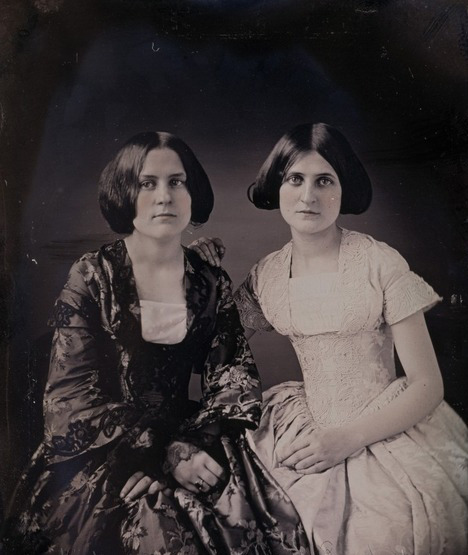
Maggie and Kate Fox; Source: American Hauntings
Spirtualism, the idea of communication with spirits of the dead, has been part of human consciousness for ages. Tales of seances, Ouija boards and spirit mediums continue to be part of pop culture in fiction, film, reality TV and social media. Spiritualism's popularity rose significantly during the 19th century as society began to change. Believe it or not, two young sisters who heard strange noises in their house at night played a significant part in spiritualism's growth.
It all started with two young girls in a small farmhouse in Hydesville, N.Y., who claimed to hear thumping or "rapping" noises in their bedroom at night. Margaretta "Maggie" Fox, age 14, and her 11-year-old sister, Kate, convinced their mother, Margaret, that their house was haunted. Maggie and Kate demonstrated how "Mr. Split-foot," as they called the spirit, could respond to questions with specific numbers of raps. Their mother asked questions such as how many children she had and how many are surviving. The spirit responded with the correct amount of raps. However, their father, John, was sceptical.
Mrs. Fox wanted to know who the spirit was and her daughters told her that he was a man who died at 31-years-old and was married with five children. Their mother decided to show a neighbor and even asked the spirit permission beforehand. The spirit consented.
It was late on March 31,1848 that the girls shared their experience with a neighbor, Mrs. Redfield. Curious and most likely sceptical, Mrs. Redfield came to the Fox home to see for herself. Mrs. Fox led the "seance" for Mrs. Redfield, commanding the spirit to knock specific numbers of times. The accurate amount of raps sounded in response each time. Their neighbor was convinced and spread the word.
The night after Mrs. Redfield's reading, a large group of neighbors came to the Fox home. One of the men devised a code for the spirit to spell out messages, with specific numbers of raps corresponding to a letter of the alphabet. The spirit said he was a peddler who had been murdered and that his remains were buried in the Foxes' basement. The Fox farmhouse was located near a creek. A storm caused the basement to flood, forcing further investigation to be postponed.
Not all of the Foxes' neighbors were amused by Maggie and Kate's supposed talents. John and Margaret Fox were asked to leave the congregation at the Methodist Episcopal Church because of the "unholy" activities of their daughters.
A pamphlet was published in 1848, "A Report of the Mysterious Noises Heard in the House of John D. Fox in Hydesville, Arcadia, Wayne County," consisting of information compiled through interviews with neighbors, former residents of the Foxes' house and John and Margaret Fox. The interviews were conducted by E.E. Lewis, an attorney from Canandaigua, N.Y., near Hydesville.
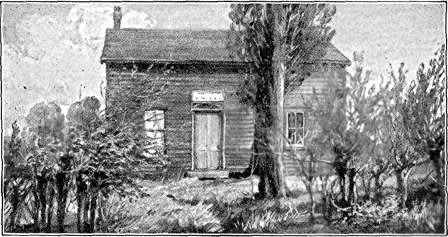
The Foxes' home in Hydesville, N.Y.; Source: Smithsonian Magazine from Hudson Valley Halloween Magazine
Leah Fox Fish, Maggie and Kate's older sister, happened to read Lewis' booklet. At age 33, Fish was much older than her sisters, divorced and a mother. After finding out about the supposed haunting in her family's home, Fish traveled from her home in Rochester, N.Y., about 20 miles from Hydesville.
Fish was already familiar with spiritualism, having read Andrew Jackson Davis' "The Divine Principles of Nature." Davis was inspired by an 18th century mystic, theologian and scientist, Emanuel Swedenborg, who described a multi-dimensional spirit world human beings enter when they die. Davis was referred to as the"John the Baptist of Modern Spiritualism" and claimed that Swedenborg's spirit communicated with him. Davis believed that the living were in contact with the dead but unable to communicate. He predicted that the lines of communication between the living and the dead would eventually open and make communication possible.
By the time the Fox family introduced their "rapping spirit," the ideas of another 18th century figure were known in the U.S. Franz Anton Mesmer was a self-proclaimed "healer" who said that human bodily functions were controlled by a "magnetic fluid." By putting people under hypnosis, Mesmer claimed that he could manipulate this magnetic fluid and correct any imbalances which cause illness. Mesmerists began operating in the U.S. Some people who were put under hypnosis said that they had seen spirits.
American society was changing with the industrial revolution, urbanization and inlux of immigrants from various cultures. Populations in cities were expanding, leading to unsanitary conditions, causing outbreaks of cholera, whooping cough, influenza and diptheria.The death rate due to disease and lack of proper medical care increased along with the population. In addition to adults, many children died in infancy. Communication with dead loved ones became a comforting thought.
Ideas about religion began to change. The fire and brimstone of old time religion gave way to a desire to help those in need. Philanthropy replaced stern piety. Many charities and organizations were established to help the needy.
Spiritualism's popularity grew in this atmosphere of questioning of conventional religion plus the increasing death rate.
Leah Fox Fish brought her younger sisters back to Rochester. Fish wanted her sisters to continue to conduct the seances at her home. Maggie and Kate's first seance in Rochester was with friends of Fish, a Quaker couple, Isaac and Amy Post. At first the Posts were sceptical but open-minded enough to come for a session with the sisters. The Posts had become disenchanted with their religion. The couple were involved in many causes including the underground railroad. They left their church because they thought the congregation was intolerant.
Initially sceptical, the Fox sisters gave a reading accurate enough to make them believers. The Posts spread the word about the girls' abilities.
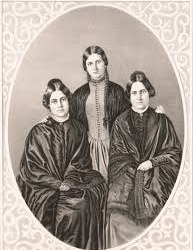
From left: Maggie, Kate & Leah Fox; Source: Wikipedia
While interest in the Fox sisters grew, not everyone was a fan. Of course there were sceptics but others thought that the seances were blasphemous. However, the sisters were contacted by an overwhelming number of requests for seances. Fish hosted the seances and usually one of the sisters acted as medium.
Maggie refused to participate for a short period. She eventually got over her melancholy and rejoined her sisters. Maggie may have changed her mind because of her sisters' financial situation. Fish was a divorced woman living at poverty level. Resuming the seances was the only way of improving their finances.
Claiming that the spirits demanded that the sisters go public and take their abilities to the community, Fish set up a seance at Rochester's largest venue, Corinthian Hall. The date was Wednesday, November 14, 1849, with the seance set to begin at 7 p.m. and admission was 25 cents. The show wasn't well-received. While the spirit did perform and raps sounded in the auditorium, there were many sceptics in the community who wanted answers.
Committees were formed to "test" the sisters in an attempt to uncover a hoax. The sisters were placed on pillows, glass and even had their underwear inspected by women of the community. In the end, it was determined that there was no hoax. A source for the rapping noises wasn't found.
On November 17, the community gathered at Corinthian Hall to hear the committees' findings. When it was announced that a hoax wasn't discovered, the audience went ballistic. Pandemonium erupted when some members of the audience set off firecrackers. People were screaming and yelling, insisting that the sisters had some object hidden on them to produce the noises. The audience tried to rush the stage. The Fox sisters and other spiritualists had to be escorted from auditorium by police.
The Fox sisters did indeed receive publicity - mostly negative. The local press in Rochester claimed that sceptics and their questions weren't welcome at the seances. One writer questioned the spirit's behavior, describing it as silly and childlike.
As that old expression goes, there's no such thing as bad publicity. Despite all the anger and negativity surrounding the Fox sisters, they reached celebrity status. The girls' decided to hit the road, taking their show to Troy and Albany, arriving in New York City in June of 1850.
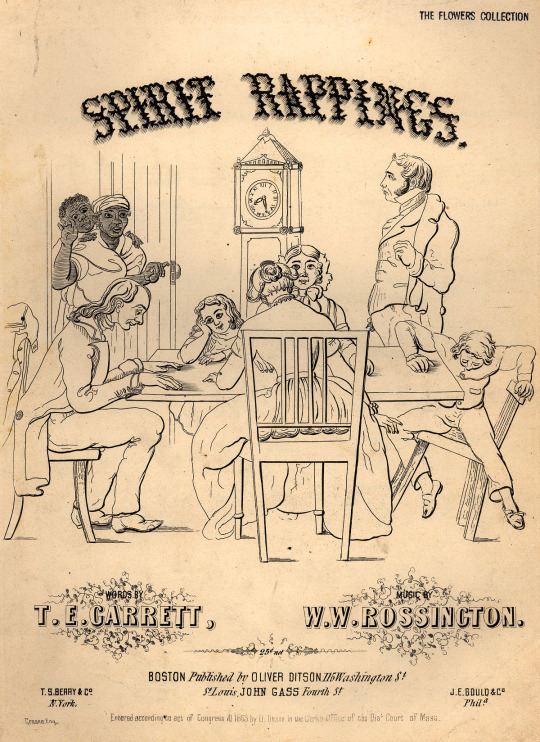
Source: Wikipedia
In a matter of two weeks the sisters attracted the attention of many highly-respected writers and editors. Their most immpressive session included receiving communication from the deceased sister of author James Fenimore Cooper. The reading included details about Cooper's sister's death while horseback riding. Cooper became a believer along with many others.
The Fox sisters became known as the "Rochester Rappers." A song was sung about them on Broadway and merchandise was sold with their image on them. People from all across the U.S. claimed to have psychic abilities. Spiritualist publications began circulating: Spirit World, Spiritual Philosopher, New Era and The Spiritualist Messenger.
Many other spiritualists gained large followings: Edgar Allan Poe's ex-fiancee Sarah Helen Whitman and levitating medium Daniel Douglas Home, both in Connecticut; teen medium Cora Scott of Buffalo, N Y. and a Boston woman known as "Mrs. Sisson," a clairvoyant physician. A farmer from Ohio, Jonathan Koons, claimed that spirits provided the instructions for him to build a spirit room. Two other men from Ohio, George Walcutt and George Rogers painted portraits who relatives recognized were deceased family members who neither of the Georges had ever met.
Along with the spread of spiritualism came more varied methods of spirit communication, including table tipping, spirit music and dancing lights. Spiritualism also attracted many critics including transcendentalist Ralph Waldo Emerson, who dismissed the spirits' raps and taps as "rat revelations."
Spiritualism was debated in the press as well as in the U.S. Congress. More spiritualists appeared on the scene and added table tipping and levitation as part of their repertoire. Maggie and Kate Fox were being slowly pushed out of the spotlight. All was not well with the sisters who had begun to fight with each other and with their supporters.
There were many claims that the Fox sisters were making the rapping noises themselves by cracking their toes, knees and ankles, mechanical devices and ventriloquism. During one seance, the spirit of Benjamin Franklin supposedly came through. A spectator observed that Franklin's spirit surprisingly had no command of grammar. Maggie is described as removing herself angrily from the table, saying that she never understood grammar. However, no fraud was uncovered after the girls had been tested many times.
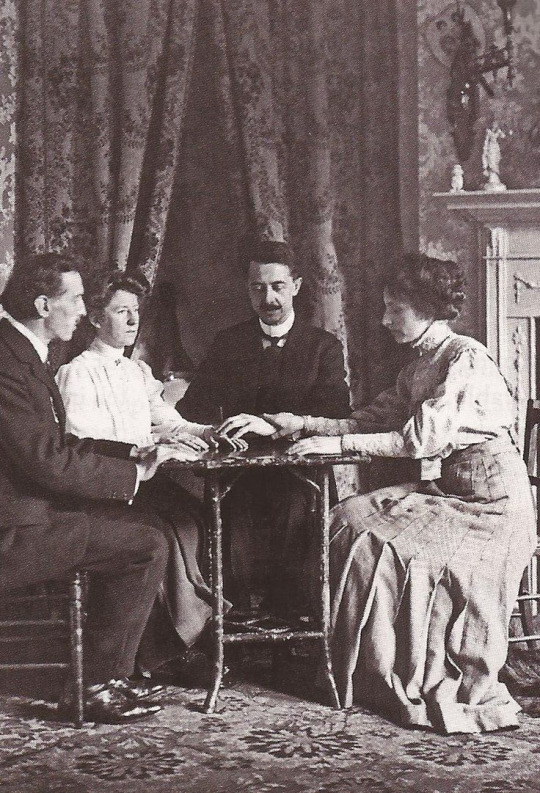
Source: How It Works Magazine
Maggie Fox quit mediumship for Elisha Kent Kane, an Artic explorer from an aristocratic background. The couple met with disapproval from Kane's family. Fox and Kane did have a ceremony with their friends in attendance but were never legally married. Maggie returned to mediumship after Kane's death in 1857. Broke and in mourning, she began to drink heavily.
Kate also began a downward spiral into alcoholism. Her excessive drinking affected her readings but nevertheless, she was still in demand as a medium. She went to England and performed for spiritualists in 1871. Kate also experienced more luck with marriage than Maggie. The following year, still in England, she married barrister Henry Jencken. The couple had two sons. Kate's eldest son, Ferdinand, supposedly demonstrated mediumistic abilities by age 3. However, Kate's luck would run out.
Around 1885, spiritualism's popularity was declining. Society was starting to question and "crack-down" on fraudulent psychics and mediums. A commission in New York called Maggie Fox to appear for a test of her abilities - she failed. Kate came back to New York in 1888 after her husband died from a stroke. Her children were taken away by welfare workers after Kate was arrested for drunkenness and idleness. Maggie did intervene to help her sister, getting Kate's sons' uncle in England to take custody.
Maggie had begun to contemplate suicide but instead made the decision to publicly debunk spiritualism. She managed to book an appearance at the New York Academy of Music in 1888.
Before her appearance, Maggie gave an interview to the New York World, who paid her $1,500. Maggie vented her anger at spiritualists as well as her sister Leah, who had publicly disparaged Kate because of her alcoholism and losing custody of her children. Kate was going to attend Maggie's confession.
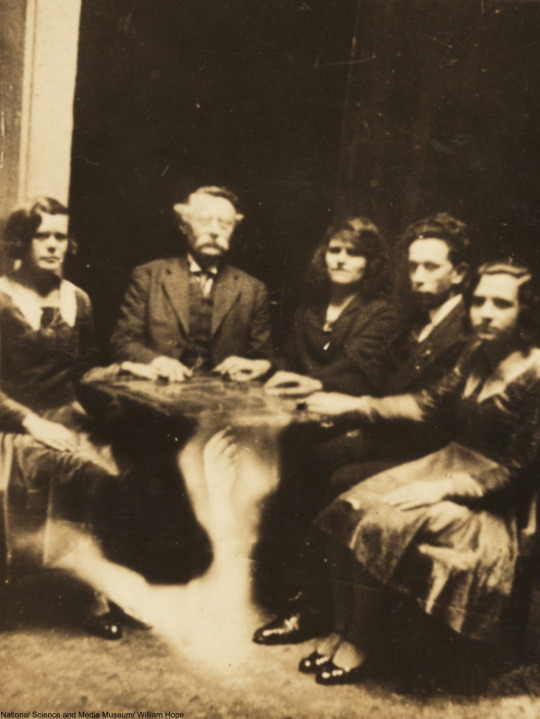
Source: Dusty Old Thing
Maggie took the stage and told the audience:
“My sister Katie and myself were very young children when this horrible deception began. At night when we went to bed, we used to tie an apple on a string and move the string up and down, causing the apple to bump on the floor, or we would drop the apple on the floor, making a strange noise every time it would rebound.”
Maggie went on to say that her and Kate began to make the rapping noises by cracking their toes, knuckles and joints. “A great many people when they hear the rapping imagine at once that the spirits are touching them. It is a very common delusion. Some very wealthy people came to see me some years ago when I lived in Forty-second Street and I did some rappings for them. I made the spirit rap on the chair and one of the ladies cried out: ‘I feel the spirit tapping me on the shoulder.’ Of course that was pure imagination.”
She also said that her sister Leah knew that her and Kate made the rapping noises. Maggie said that Leah used her and Kate to make money. She then took off her right shoe, propped up her bare foot on a stool and proceeded to make short raps.
Maggie wrote in her 1888 memoir, "The Death Blow to Spiritualism," that her and her sister, Kate, continued their story out of fear of punishment by their parents and being ostracized by neighbors.
Spiritualists claimed that since Maggie couldn't profit from mediumship, she looked to profit from debunking it. Maggie also went incognito to a debate at the Manhattan Liberal Club. Under the name Mrs. Spencer, Maggie divulged all of the tricks that mediums supposedly use such as writing messages on slates with their teeth or feet. Spiritualists would be further outraged one year after Maggie's confession when she claimed her spirit guides prompted her to recant her confession.
Maggie remained estranged from Leah until Leah's death in 1890. Leah Fox Fish had married a second time to a wealthy businessman and wanted nothing to do with Kate or Maggie. Kate succumbed to alcoholism in 1892. Maggie passed away in 1893, destitute and living in a friend's home in Brooklyn. Oddly enough, the year that Maggie died also marks the establishment of the National Spiritualist Association, now known as the National Spiritualist Association of Churches.
Despite Maggie Fox's confession, spiritualism continues today. Countless mediums have written books, hosted TV shows and have a presence on social media. Many reality TV shows about paranormal investigation have also popped up on TV, especially in recent years. The belief in life after death has existed since time immemorial. As always, the debate continues - is life after death reality, delusion or just showbiz?
- Missy Dawn
Sources:
"The Fox Sisters and the Rap on Spiritualism," by Karen Abbott, Smithsonian Magazine, October 30, 2012.
"The Fox Sisters: The Rise and Fall of Spiritualism's Founders," American Hauntings Ink, The Haunted Museum
The Fox Sisters: Spiritualism’s Unlikely Founders," by Nancy Rubin Stuart, American History Magazine, August 2005.
#paranormal#spirtualism#ghost and spirits#spirit communication#the fox sisters#psychics#spirit medium#seance#19th century#history
14 notes
·
View notes
Text
Storm Lanier Death | Obituary – Storm Lanier Accident
Storm Lanier Passed Away | Cause Of Death
Storm Lanier died March 17, 2020 following severe vehicle crash that took place on Ohio 101 at the intersection of Ohio 2 in Margaretta Township, said report.
Storm Lanier passed away Tuesday in accident. She passed on at the age of 18 from the injuries a collision inflicted, said police.
Lanier was traveling eastbound in a vehicle, when for reasons…
View On WordPress
0 notes
Text
Anne Cox Chambers, Media Heiress and Ex-Ambassador, Dies at 100
“I think it’s too soon for us to have a black president, but even if it weren’t, I don’t think he should be it,” she told Vanity Fair. “He’s sleazy.” The nomination went to Gov. Michael S. Dukakis of Massachusetts, who lost to George Bush.
Some of her politicking was of the shoe-leather, door-to-door variety. In Mr. Carter’s 1976 campaign, she was part of the “peanut brigade” of volunteers that traveled to contested states. She did the same thing in later elections, including 2004, when she was 84, supporting Senator John Kerry’s bid to unseat President George W. Bush. She opposed the tax breaks — a substantial one in her case — that Mr. Bush had given rich people like her.
“It’s tainted money,” she said. “I don’t want it.”
In a 2011 interview with Atlanta magazine, which noted that she had a cardboard cutout of President Barack Obama in her living room, she credited her father for her lifelong affiliation with the Democratic Party. “I remember someone asked Daddy if he would ever think of voting for a Republican, and he said, ‘Sure I would, if I ever found one worth voting for,’” she said.
Anne Beau Cox was born on Dec. 1, 1919, in Dayton, Ohio. Her mother, the former Margaretta Parler Blair, used the baby as a way to avoid talking about political issues when appearing in New York the next year, during her husband’s presidential campaign.
“But please excuse me from talking politics,” she said. “Anne is very well, thank you. Baby Anne was born last winter.”
Mrs. Chambers attended Miss Porter’s School in Farmington, Conn., spent a year in Paris and graduated from Finch College in Manhattan, which closed in 1976. She liked to say she first went to Atlanta to attend the premiere of “Gone With the Wind” on Dec. 15, 1939, and never left.
She married Louis G. Johnson six months after the premiere. That marriage ended in divorce. She married Robert William Chambers in 1955. That marriage also ended in divorce.
from WordPress https://mastcomm.com/anne-cox-chambers-media-heiress-and-ex-ambassador-dies-at-100/
0 notes
Link
CLEVELAND — Dozens of schools are closed as winter weather hits Northeast Ohio Tuesday morning.
Dozens of schools are closed as winter weather hits Northeast Ohio
The following schools are either closed or delayed:
Monroeville Local SD: Delayed 1 hour, 30 minutes Ontario Local SD: Delayed 2 hours Port Clinton City SD: Delayed 2 hours St. Peter School - Mansfield: Delayed 2 hours Willard High: Delayed 2 hours Ashland City SD: Delayed 2 hours Ashland Co-Wst Holmes JVSD: Delayed 2 hours Bellevue City SD: Delayed 2 hours Black River Local SD: 2-hour delay - No AM preschool Buckeye Central Local SD: Delayed 2 hours Clear Fork Valley Local SD: Delayed 2 hours Conneaut Area City SD: Closed Crestview Local SD - Richland: Delayed 2 hours Edison Local SD: Delayed 2 hours EHOVE JVSD: Delayed 2 hours Fairway School: Delayed 2 hours Hillsdale Local SD: Delayed 2 hours Lucas Local SD: Delayed 2 hours Mapleton Local Sd: Delayed 2 hours Margaretta Local SD: Delayed 2 hours New London Lcl SD: Delayed 2 hours Norwalk City SD: Delayed 2 hours Sandusky City SD: Delayed 2 hours South Central Lcl SD: Delayed 2 hours Ashland Christian School): Delayed 2 hours Ashland Montessori: Delayed 2 hours Firelands Montessori Academy: Delayed 2 hours St. Adalbert Elem: Closed St. Joseph Academy HS: Closed St. Martin de Porres HS: Closed Northwestern Lcl SD: Delayed 2 hours Triway Local SD: Delayed 2 hours Collins Christian Children's Center: Closed Ashland Head Start Center: No morning services Great Lakes Truck Driving School: Closed Dale Roy School: Delayed 2 hours Haugland Learning Center: Delayed 2 hours Firelands Local SD: Delayed 2 hours The Lyceum: Closed Perkins Local SD: Delayed 2 hours ACCAA Head Start - Conneaut: Closed
0 notes
Text


Asclepias tuberosa, Castalia Prairie (2) by Noah Yawn
1 note
·
View note
Photo

SO72178482mc by ~IndigoDreamer29~ on Flickr.
0 notes
Text
Anne Cox Chambers, Media Heiress and Ex-Ambassador, Dies at 100
“I think it’s too soon for us to have a black president, but even if it weren’t, I don’t think he should be it,” she told Vanity Fair. “He’s sleazy.” The nomination went to Gov. Michael S. Dukakis of Massachusetts, who lost to George Bush.
Some of her politicking was of the shoe-leather, door-to-door variety. In Mr. Carter’s 1976 campaign, she was part of the “peanut brigade” of volunteers that traveled to contested states. She did the same thing in later elections, including 2004, when she was 84, supporting Senator John Kerry’s bid to unseat President George W. Bush. She opposed the tax breaks — a substantial one in her case — that Mr. Bush had given rich people like her.
“It’s tainted money,” she said. “I don’t want it.”
In a 2011 interview with Atlanta magazine, which noted that she had a cardboard cutout of President Barack Obama in her living room, she credited her father for her lifelong affiliation with the Democratic Party. “I remember someone asked Daddy if he would ever think of voting for a Republican, and he said, ‘Sure I would, if I ever found one worth voting for,’” she said.
Anne Beau Cox was born on Dec. 1, 1919, in Dayton, Ohio. Her mother, the former Margaretta Parler Blair, used the baby as a way to avoid talking about political issues when appearing in New York the next year, during her husband’s presidential campaign.
“But please excuse me from talking politics,” she said. “Anne is very well, thank you. Baby Anne was born last winter.”
Mrs. Chambers attended Miss Porter’s School in Farmington, Conn., spent a year in Paris and graduated from Finch College in Manhattan, which closed in 1976. She liked to say she first went to Atlanta to attend the premiere of “Gone With the Wind” on Dec. 15, 1939, and never left.
She married Louis G. Johnson six months after the premiere. That marriage ended in divorce. She married Robert William Chambers in 1955. That marriage also ended in divorce.
from WordPress https://mastcomm.com/anne-cox-chambers-media-heiress-and-ex-ambassador-dies-at-100/
0 notes